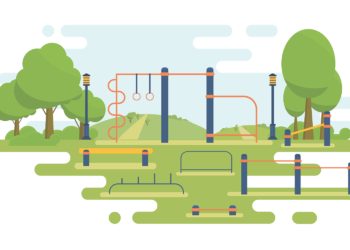Many roofing products today claim to be “sustainable” and “green” – but what does this really mean for the people in charge of maintaining the building and its performance? Aside from the feel-good benefits of helping the planet, sustainable roofing can also offer significant money savings.
Cool Roofs, Big Savings
Sustainable roofing is commonly referred to as cool roofing, which is white or light in color. By reflecting up to 86 percent of the sun’s energy, light colored roofs can greatly reduce energy consumption and costs compared to darker colored roofs, which can only reflect as little as 5 percent of the sun’s energy.
This reflectivity is particularly helpful for reducing peak energy demand — the sharp peak in electrical demand can be observed in almost every building during the busiest hours of the day. Although a share of this peak may be attributed to equipment used in the building, a significant portion is caused by increased demand for air conditioning in the heat of the afternoon. This peak in demand requires additional power plant capacity, causes imbalances in the power grid and may result in increased air pollution. But most importantly for the building owner, peak demand may result in monthly charges many times higher than base electrical rates.
One of the best approaches to shrink peak demand is to reduce the heat load on a building, especially the solar load that drives the need for air conditioning. Few heat reduction strategies can match the energy-savings potential of modern cool roofing technology.
An analysis of the effect of cool or highly reflective roofs suggests that peak demand charges may account for a significant portion of monthly electric bills across the United States. Cool roofs may provide an equally significant opportunity to reduce these charges when installed on air-conditioned buildings. The analysis also suggests that the peak demand and net energy savings offered by cool roofs are available for both new and existing conditioned buildings in all climates within North America.
Certifications Mean Transparency
Although many building products make grand sustainability claims, finding products that have third-party certifications is increasingly important.
For membrane roofing, the NSF/ANSI 347: Sustainability Assessment for Single Ply Roofing Membranes has become a reliable certification to help architects and specifiers reach their sustainable goals. This standard takes product design, product manufacturing, membrane durability, corporate governance and innovation into consideration, with the first three categories carrying the most weight. Depending on the amount of points a manufacturer scores they can earn a compliant, silver, gold or platinum rating under this certification.
Another third party verification for building products is Environmental Product Declarations (EPDs). Certified by global public health organization NSF International, EPDs report environmental impact data, which assists building contractors, architects and designers in making more informed purchasing decisions. Very few commercial roofing manufacturers offer EPDs, so finding a product that offers one can give facility managers extra peace of mind.
Both NSF/ANSI 347 and EPDs are recognized globally by LEED (leadership in energy and environmental design) Green Building Rating System as well as Green Globes, another green building standard.
Other Sustainable Considerations
There are many other things to consider when selecting a sustainable roof, including its compatibility with other products that can make the building more efficient and enjoyable for occupants. Rooftops can be an excellent place to locate solar arrays, especially in locations where open ground may be at a premium. With good planning and design and the use of high quality products with proven installation methods, the rooftop solar system can function in concert with the roof system, providing years of service and benefit from both.
Skylights are a rooftop option that can enhance both the rooftop and inside a building. With skylights, building owners and managers can use daylighting to reduce the need for interior lighting – cutting down on electricity costs and improving both occupant productivity and comfort.
A sustainable material for flat or low-slope roofing is PVC, which is an extremely serviceable and durable product that is also flame resistant, highly flexible and resistant to bacterial growth. It also recyclable and can often be taken back at the end of its life on the rooftop and be made into other products.
As you can see, choosing a sustainable roof is about more than going “green” or helping the planet. A sustainable roof can offer energy savings, comply with internationally recognized green building standards and enhance a building overall.
Jenny Bruzewski is the Marketing Communications Manager at Duro-Last® Roofing, Inc. She can be reached at jbruzews@duro-last.com or visit www.duro-last.com.










